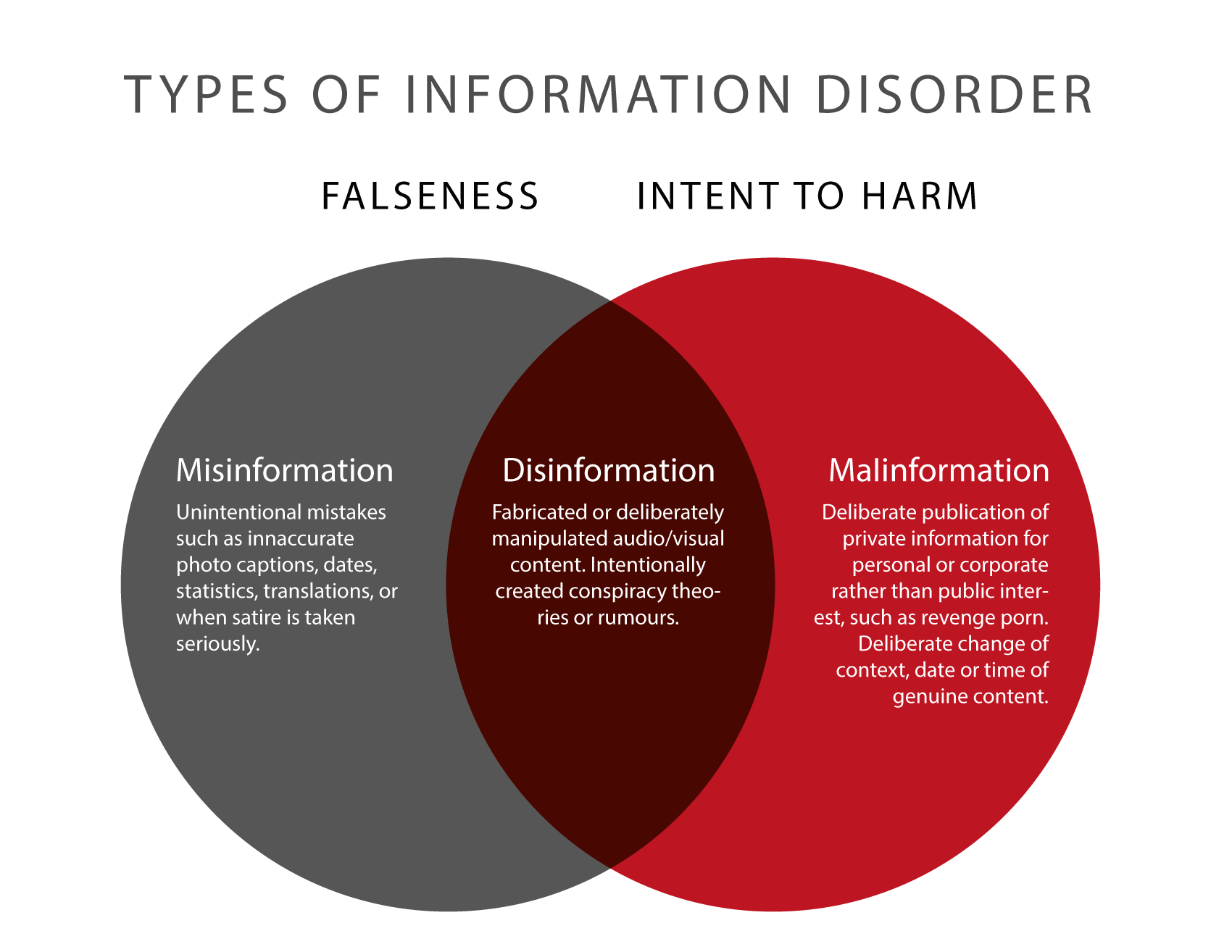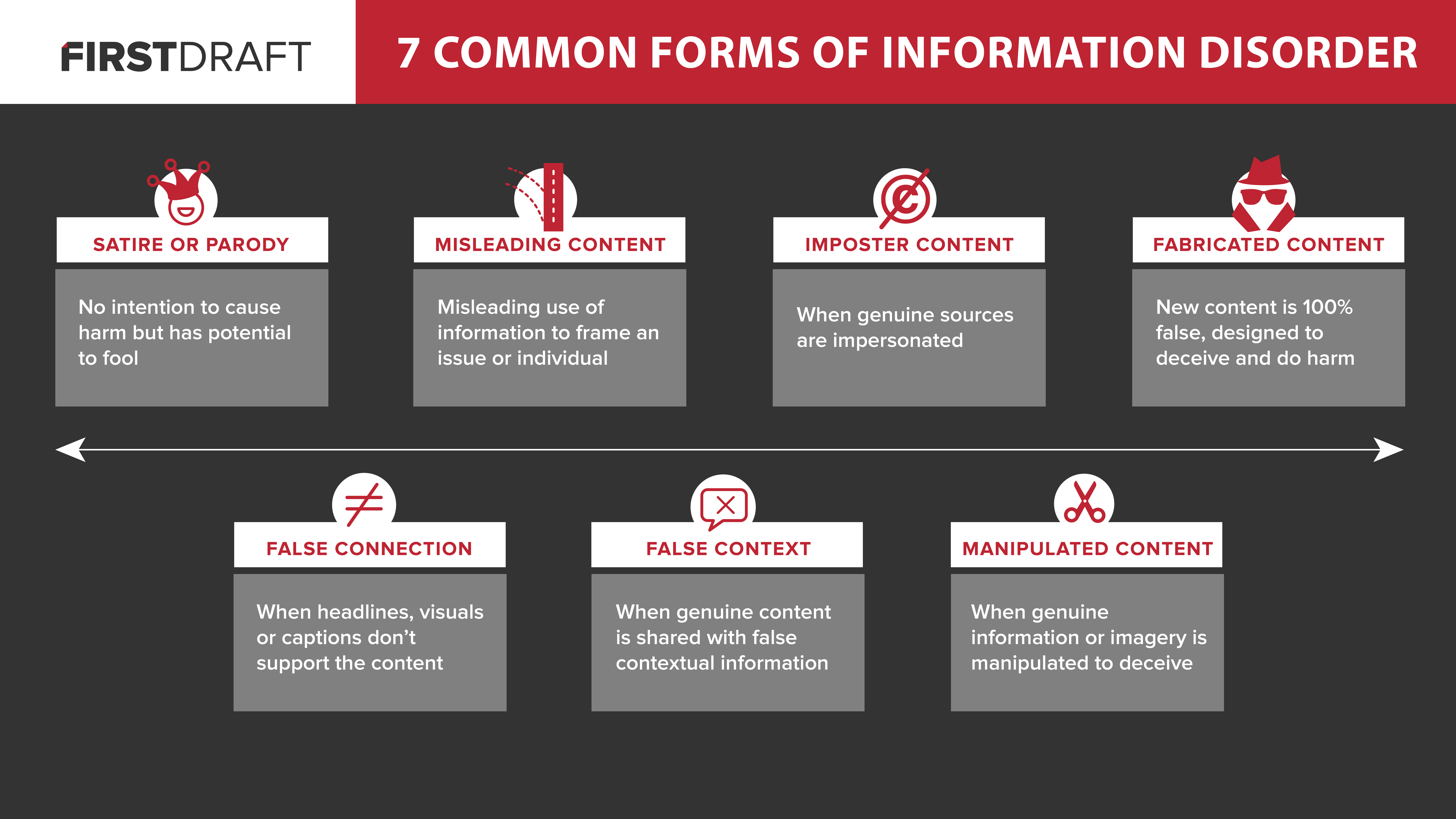Disinformation, misinformation
| Term | Definition |
|---|---|
Disinformation, misinformation |
Wardle (2017) makes a distinction between misinformation, disinformation, and malinformation.
Depending on the intention and the level of falseness, we can further distinguish seven different categories (Wardle 2017: 953-954): Satire and Parody: Not intentionally misleading, but people may not recognize satire as satire or parody. Fellas have bonked parody accounts, and russian media fell for Eli Kopter parody. False Connection: For example, clickbaits. The headline, visuals or captions don’t support the content. Misleading Content: Information is used to inaccurately frame an issue or an individual. Correct facts provide an illusion of truthfulness. For example, you can put a positive spin on the low Russian unemployment rate by presenting it as a success, not as labor shortage. False Context: Accurate content is circulated out of its original context, misleading the reader. For example, a photograph of Metallica’s concert on Red Square in Moscow claimed to show antivaxx demonstration in Austria. Imposter Content: It means using someone else’s byline, twitter handle, or logo. Manipulated Content: Genuine content can be manipulated to deceive, for example by photoshopping. Fabricated Content: Pure lies, they can be textual or visual. Wardle, C. (2018). The Need for Smarter Definitions and Practical, Timely Empirical Research on Information Disorder, Digital Journalism, 6:8, 951-963, DOI: 10.1080/21670811.2018.1502047
|




